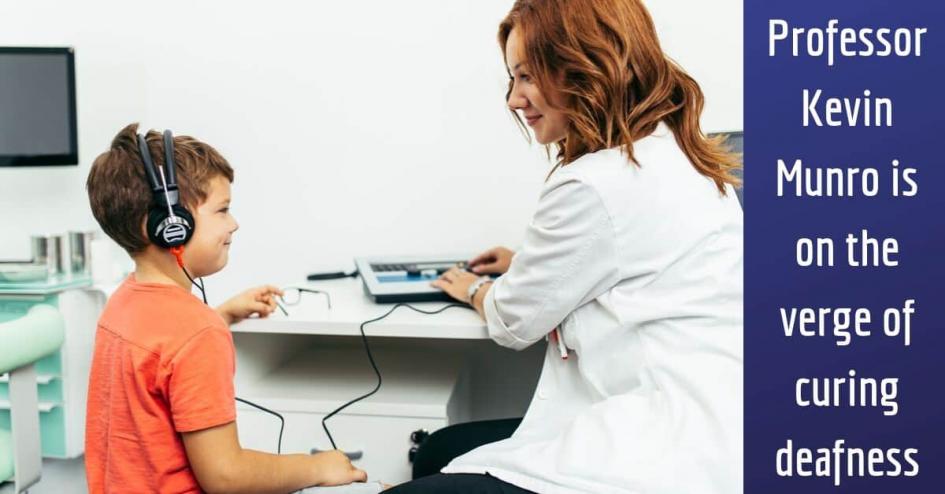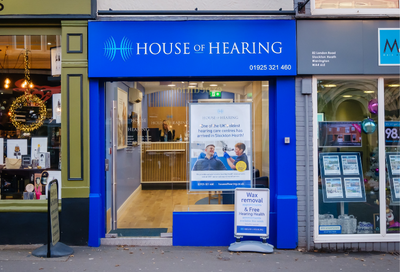
Professor Kevin Munro is on the verge of curing deafness
Hearing loss is an increasing national health problem. Approximately 1 in 6 adults in the UK are impacted by hearing loss. Of these, 8 million are over 60 years of age. Estimates indicate that around 15.6 million individuals in the UK will have hearing loss by 2035 – rising to about 20% of the UK population. With these figures, attention is growing on how to best tackle the issue. Professor Kevin Munro and his team at Manchester University’s biomedical research centre run the UK’s first and only hearing device research centre. One of the centre’s aims is to develop technology that will help improve the hearing experience for those who already have hearing loss. It’s clear that treatment should be a high priority for anyone with hearing loss. Treating people for hearing loss improves their quality of life and has the potential to delay brain ageing and dementia. In fact, a recent study at the same university found that hearing aids could reduce the onset of cognitive decline by as much as 75%.
The research
Munro’s latest research revolves around using the material graphene in an attempt to create the smallest ever hearing aids. Extracted from graphite, the substance forms a two-dimensional crystal as small as the size of an atom. This crystal is six times stronger than steel and even better at conducting electricity than copper, making it the perfect material to use with small microphones for implanting into the ear. Although this is still in its early stages, Professor Munro remains excited about the potential: “it could mean people with hearing loss don’t have to have anything sitting on the ear. It would be much better to have the microphone down the ear canal where you are meant to hear from.”
How graphene hearing aids could change the hearing industry
The introduction of graphene-based tiny implant-style hearing aids could transform the hearing industry, as well as the experience of wearing hearing aids in general. Here are some of the possible benefits: Increased uptake of hearing aids: 6.7 million people could currently benefit from hearing aids in the UK but only about 2 million people are actually using them. Having smaller hearing aids that are invisible to others could increase the numbers of people wearing them on a regular basis, as they would become even more discreet and hard to detect. Increased use of hearing aids: With surgically implanted hearing aids, you won’t be able to forget them in a kitchen drawer. This means those with the hearing aids will use them much more often, helping them to get used to them much quicker than before. More natural sound quality: While conventional hearing aids capture and handle sounds from outside the ear, a hearing implant would use the natural anatomy of the ear to amplify and offer you a more complete and natural hearing experience.
Today’s hearing aids are still cutting-edge
Although this development could signal exciting times for hearing aids, in many ways, the future is already here. Today's hearing aids are a long way from the large devices that some people still imagine. They can be incredibly tiny, sleek instruments that fit inside or sit behind the ears. They have not only gotten smaller and more convenient, but now carry advanced programs and configurations that enable you to hear well in any environment. Whether you're out at the cafe, or sweating it out at the gym, today's hearing aids are much better at helping you understand others in noisy environments. Many hearing aids can sense your environment and alter between programs or modify settings automatically. One of the most exciting developments is lithium-ion rechargeable hearing aids. These last the entire day on just one overnight charge, even when streaming content using Bluetooth.
House of Hearing
At House of Hearing, we look forward to helping and informing you as you navigate a path toward better hearing. A comprehensive hearing test and appropriate treatment is necessary to maintain and sustain your hearing health. Contact us today to set up an appointment.
Our Clinics
All House of Hearing clinics are in town centre locations and accessible to public transport and parking. Home visits also available if mobility is an issue.


.png)
.png)
.png)

.png)
